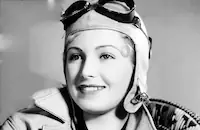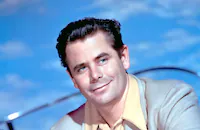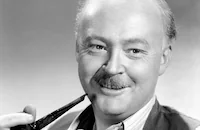Convicted Woman

Brief Synopsis
Cast & Crew
Nick Grinde
Rochelle Hudson
Frieda Inescort
June Lang
Lola Lane
Glenn Ford
Film Details
Technical Specs

Synopsis
Jobless Betty Andrews is arrested in a department store and wrongfully accused of theft. Although Mary Ellis, a prominent attorney and social worker, comes to Betty's defense, she is unable to overcome the circumstantial evidence and Betty is sentenced to one year in the Curtiss Home of Correction. At the reformatory, Betty discovers that chief matron Miss Brackett rules with an iron hand, and that she is aided by inmates "The Duchess," Frankie Mason, Nita Lavore and other stooges. In exchange for their tale-bearing, the Duchess and others are given special favors by Brackett. Brackett's inhumane treatment eventually drives one of the girls, Gracie Dunn, to suicide, and when Betty finds the body, she is forced to take an oath of secrecy under threat of death by the Superintendent and Brackett, who list "pneumonia" as the official cause of Dunn's death. Fearing for her life, Betty plans to escape by selling the story of the suicide to reporter Jim Brent, and using the money to pay Frankie to smuggle her out. Jim gets the story from Betty by posing as her visiting attorney, and when the papers print it a scandal ensues. Meanwhile, Frankie doublecrosses Betty, who is punished for her escape attempt with solitary confinement. The story of Dunn's suicide soon results in the appointment of reformer Mary Ellis as head matron. Mary improves the conditions at the institution and introduces many new reforms, including self-government and a test policy that will allow ten girls to leave the reformatory for the Thanksgiving holiday. Angry because the new system has robbed them of their special privileges, the Duchess and Frankie kidnap Betty to prevent her from returning to the Curtiss Home on time. However, when Jim learns of their treachery, he comes to Betty's rescue and saves both Mary's regime and Betty. All ends happily as Betty is granted a pardon and leaves the institution to marry Jim.

Director
Nick Grinde
Cast

Rochelle Hudson

Frieda Inescort

June Lang

Lola Lane

Glenn Ford

Iris Meredith
Lorna Gray
Esther Dale

William Farnum
Mary Field
Beatrice Blinn
June Gittelson
Dorothy Appleby

Linda Winters
Dorothy Fay
Marion Pope
Lucille Raye
Maxine Leslie
Sibyl Harris
Stanley Andrews
John Tyrrell
Eddie Laughton
Frank Jaquet
Ed Le Saint
Gertrude Sutton
Richard Fiske

Don Beddoe
Milburn Moranti
Gene Stone
Ralph Peters
Bill Lally
Nick Copeland
Harry Bailey
Charles Sullivan
Fred Warren
Hal Price
Dick Rush

Jim Millican

Walter Sande

Evelyn Dockson
Blanche Payson
Marin Sais
Helen Dickson
Willis Claire
Carl Leviness
Jay Eaton
Roger Holiday

Bruce Bennett
Lynton Brent
Crew

Film Details
Technical Specs

Articles
Convicted Woman
Columbia like most Hollywood studios was in love with prisons as a setting for a particular kind of film. In the 1930s, with a grim economic outlook and war on the horizon, who else but men and women behind bars were guaranteed a worse life than the average citizen? What location is more forbidden and frightening than the stone walls of a penitentiary? It was perfect movie fodder, and Columbia explored the genre with movies such as Parole Girl (1933), Shadows of Sing Sing (1933), Escape from Devil's Island (1935), Convicted (1938), Woman Against the World (1937), Women in Prison (1938), A Woman Is the Judge (1939) and many more. 1940 brought Fugitive from a Prison Camp and then Convicted Woman, a female-centric prison drama that while staying true to the popular genre conventions of prison movies also managed to tell a compelling story.
The story of Convicted Woman an innocent woman is falsely imprisoned, spurring a lawyer and a reporter to come to her aid - was concocted by former newspaperman Martin Mooney and screenwriter-producer Alex Gottlieb. Columbia assigned the direction to Nick Grinde, a prolific and competent director of peppy "B" movies whose career spanned from the late 1920s until the mid 1940s, and included directing humorist Robert Benchley in his 1936 Academy Award®-winning short How to Sleep.
A strong cast of lesser-known actresses came together to give credibility to the overly familiar storyline of Convicted Woman. Rochelle Hudson played Betty Andrews, the wrongly-convicted young woman. Hudson was a Hollywood veteran, a former WAMPAS baby star who broke into the movies doing voice work as a teenager. She then graduated to supporting roles in films such as 1935's Les Miserables, opposite heavyweights Charles Laughton and Fredric March, and the same year played Shirley Temple's older sister in Curly Top and the female lead opposite Henry Fonda in Way Down East. The next year she was the title character in the W.C. Fields' vehicle Poppy, playing Fields' daughter, and she continued to work steadily in movies for three decades but usually not in high-profile films. Cast as the justice-seeking lawyer in Convicted Woman was Scottish-born Frieda Inescourt whose British demeanor was ideally suited for the strong-willed women she most often portrayed onscreen.
Lola Lane, one of the well-known Lane sisters (besides Priscilla and Rosemary) joined the cast as one of Rochelle's fellow inmates, with June Lang coming along to play a tough prison gal with the nickname "The Duchess". Lang, also a talented singer and dancer, had been in movies since the early 1930s, with promising roles in Laurel and Hardy's Bonnie Scotland (1935) and two Shirley Temple productions Captain January (1936) and Wee Willie Winkie (1937) but her career faltered when she married producer/director Roland West in 1940. West had been a murder suspect in the death of Thelma Todd (though never convicted) and the resulting taint prevented Lane from being assigned A-level pictures.
Male lead Glenn (Gwyllyn) Ford was just beginning his Hollywood career at the time of Convicted Woman. Born in Quebec City, Canada, Glenn and the family (his father was a railway executive) moved to Southern California when he was just eight years old, and he eventually attended Santa Monica High School. Though he was always attracted to show business, his first theatrical jobs were in stage management. When it became obvious to him that actors were paid much better and didn't work as hard as stage managers, Glenn changed his focus to acting. (His stage name comes from Glendord, the name of his father's hometown in Canada.) Ford landed a contract at Columbia Studios in 1939, and by the time of Convicted Woman he was already exhibiting an appealing charisma and understated strength that would become part of his growing popularity and make him a big star for the studio, especially in several movies opposite Rita Hayworth.
The other male of consequence in the movie was actor William Farnum who plays the Commissioner. Farnum, born in 1876, was genuine acting royalty from one of the most famous American theatrical families. At the age of ten he made his stage debut in a production of Julius Caesar starring the legendary Edwin Booth, and later Farnum achieved huge success with his stage role as Ben Hur in a spectacular 1900 stage production. He quickly became one of the leading lights of the American stage and a bona fide matinee idol, but the lure of the silver screen was too great and he ventured into the movies in 1915. For the next ten years he was a major star and a highly paid actor, before his descent into character roles like Convicted Woman after suffering a major injury while making The Man Who Fights Alone in 1924.
While Convicted Woman is just another assembly line prison film one of the earliest, actually it tries hard to present a sober and realistic look at the troubles that plagued many real-life penal institutions of its era. By placing an innocent character into the unjust and corrupt prison world, and by also showing that there were crusaders willing to go to bat to help fix the ills of the system, Convicted Woman, in its own way, helped Americans continue to have faith in their legal structure. Melodrama it may be, but it was also a cinematic lesson in civics that made a positive mark on audiences in 1940.
Producer: Ralph Cohn
Director: Nick Grinde
Screenplay: Joseph Carole; Martin Mooney, Alex Gottlieb (story)
Cinematography: Benjamin Kline
Film Editing: James Sweeney
Cast: Rochelle Hudson (Betty Andrews), Frieda Inescort (Social Worker Mary Ellis), June Lang (The Duchess), Lola Lane (Hazel Wren), Glenn Ford (Jim Brent, reporter), Iris Meredith (Nita Lavore), Lorna Gray (Frankie Mason), Esther Dale (Chief Matron Brackett), William Farnum (Commissioner McNeill), Mary Field (Gracie Dunn), Beatrice Blinn (May), June Gittelson (Tubby), Dorothy Appleby (Daisy).
BW-65m.
by Lisa Mateas

Convicted Woman
Quotes
Trivia
Notes
Working titles for this film were Dames and Daughters of Today. A biography of Rita Hayworth claims that Hayworth would have starred in this picture had she not been loaned to M-G-M for Susan and God (see below). The file for the film in the MPAA/PCA Collection at the AMPAS Library indicates that in July 1939 the PCA warned Columbia to remove from the script some censorable material, including the line, "I've been around the world and I don't mean geographically"; scenes containing nudity; "offensive details" of the fight staged by "Betty" and "Frankie"; and "Hazel's" line, "With your figure, he might just ask for your phone number." The PCA file also contains regional censorship reports, which indicate that the shot of a girl's hanging body early in the film was deleted from prints in various countries and territories. Australian censors eliminated from the film the line: "I want two [men]. I'm double jointed."














